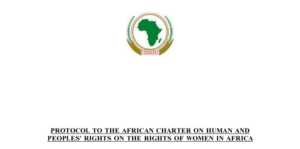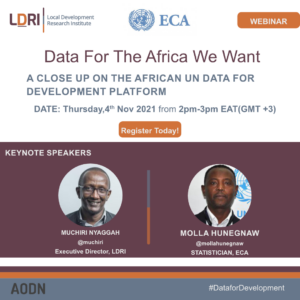![]()
Maputo Protocol: Going Beyond Ratification
The importance of gender equality and women’s rights has become a familiar chorus and African countries have made progress over the years by signing up to and implementing progressive continental conventions and legislation at the national level. However, there is not much to show for sustainable progress in gender equality and enforcement of women’s rights for the most vulnerable as spelt out in any of the continental documents they are signatories to, let alone national legislation. There’s a cycle of constant conversations on gender equality and women’s rights with not much to show for sustainable changes in the long term.
2019 marks 16 years since the adoption of the Protocol to the African Charter on Human and Peoples’ Rights on the Rights of Women in Africa also known as the Maputo Protocol by the African Union. The protocol is lauded as one of the most progressive instruments on the rights of women and girls in the world, pushing boundaries with clauses on reproductive health rights. The protocol today has 49 signatories and 40 ratifications. 16 years later however, a lot of countries cannot clearly illustrate sustainable progress on women’s rights and gender equality beyond signing and or ratification.
Actualization of sustainable gender equality and the enforcement of women’s rights lies in the implementation of evidence based interventions and the constant monitoring and evaluation of progress. As such, it requires more than just money, but also innovations and both qualitative and quantitative data. Data enables us to see areas that have seen traction over the years and areas that still lag behind and thus require more attention. Without data, countries remain in a cycle of ‘commitment’ to gender equality without evidence to inform sustainable approaches towards greater equality especially for the most vulnerable populations.
For most African countries, there is no way of tracking progress on commitments made after signing and ratification of continental instruments such as the Maputo Protocol. How then do we follow through to see what progress has happened and hold countries accountable for commitments they have made?
Among the key issues raised by countries on the domestication of the Maputo protocol and by extension tracking progress on it is the claim that a lot of what the protocol spells out is already captured either by constitutions or national laws. Like with many other international development blueprints, commitments in the Maputo Protocol have overlaps with already existing national priorities an issue that should not in any way take away from government following through with their commitments.
The onus is then on governments to find innovative ways to synergize operations and data collection for issues that are cross cutting both nationally and for regional, continental and global commitments to gender equality. One such approach is the one taken by the Southern Africa Development Community (SADC) which in 2008 adopted the SADC Protocol on Gender and Development. The protocol brings together commitments made in all national, regional, continental, global and instruments for achieving gender equality including the Maputo Protocol and fills in the gaps by setting measurable targets where these do not already exist.
To monitor progress on commitments in the protocol, SADC developed the SADC Gender Protocol Barometer; a tool that ascribes indicators to monitor progress on gender equality. It provides both a qualitative and quantitative analysis of gender equality in the region and nationally yearly, which then better informs decisions by both government, private sectors and CSOs when developing gender equality interventions.
The Barometer is not without challenges like late reporting by countries but presents one way African governments can go around overlaps. It provides a clear road map for monitoring progress and through which countries can go beyond being celebrated for signing and ratifying the Maputo Protocol to actually implementing and monitoring progress on gender equality and women’s rights.





